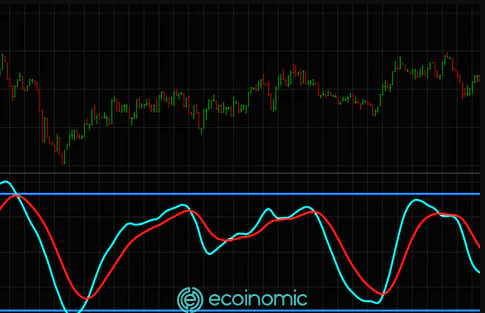Advertisement
Scalp trading is a popular trading strategy in financial markets such as cryptocurrencies, stocks, forex,…
If you are still wondering what scalp trading is, refer to the article below for more detailed information!
What is scalp trading?
Scalping is a short-term trading strategy that aims to make regular profits from small fluctuations in prices.
Scalp traders will make multiple trades in short periods of time, looking for small price movements and exploiting inefficient markets. Small profits will accumulate over time into a significant amount.
Scalp traders will rely on technical analysis to come up with trading ideas. Since most fundamental events take place over a long period of time, scalp traders will rarely be interested in fundamental analysis.
However, Fundamental Analysis still helps traders make a big difference in the process of selecting trading assets.
Scalping analysts often take advantage of short-term movements rather than large price movements. Therefore, this strategy requires the trader to have an in-depth understanding of the market mechanism and make quick decisions.

How do scalp traders make profit?
What are the technical factors that traders need to consider? Trading volume, support and resistance zone, hammer candlestick pattern are all commonly used to identify and place order. The most popular technical indicators used by scalpers are moving average, RSI, bollinger bands, VWAP, and Fibonacci retracement tools.
Many scalp traders also use real-time analysis of order books, volume profiles, open interest rates, and other complex indicators. In addition, many scalp traders create their own indicators to monitor the market.
Scalp traders will trade for very short periods of time, so they often use intraday charts, 1-hour, 15-minute, 5-minute or even 1-minute charts or less than 1 minute.
Pros and cons of scalp trading
Advantages
- Scalping can be easily automated as it is often based on technical criteria that can be calculated in advance.
- Low losses: Investors can control the loss and manage risks due to short trading time, relatively small trade size.
- High profit: By using leverage, users can take advantage of market fluctuations to optimize profits.
Disadvantages
- High transaction fees: Investors have to pay fee for each transaction, so when making multiple transactions, the transaction fee is higher.
- Time-consuming trading: Users need to spend a lot of time constantly monitoring market fluctuations, taking advantage of price differences to place appropriate orders.
- A good knowledge of technical analysis: Investors need experience to analyze indicators, charts, react immediately to price fluctuations and have high assertiveness.
- Psychological pressure: Delay in trading can lead to losses, investors face high stress when making scalping trade.
Scalp trading strategies
Discretionary scalping
Discretionary scalp traders often make trading decisions immediately. They rely heavily on intuition to decide when to join or exit. Their decisions were made quickly based on existing conditions.
Systematic scalping
In contrast, systematic scalp traders clearly define the rules in the trading system based on data and algorithms. If the conditions are met, they will enter or exit a trade.
Range trading
Some scalp traders may use range trading strategy. They wait for a price range to be set and trade within that range. When the range is broken, the lower part of the range will be the support and the upper part of the range will be the resistance.
Of course, this does not guarantee 100% of the transaction will be successful, but it can create an efficient scalp trading system. However, in case the price ranges are broken, excellent scalp traders should place stop-loss order.
Bid-ask spread
Another scalping technique is bid-ask spread. Scalping traders can profit from a significant difference between the highest buying price (bid) and the lowest selling price (ask).
However, this strategy is more suitable for algorithmic or quantitative trading because investors cannot find underperforming market points as quickly as algorithm-powered bots.
Leverage
Since the target ratios are relatively small, scalping traders often use leverage to increase the size of their positions. This is why scalp traders often use margin trading platforms, futures contracts, and other types of financial products that offer leverage.
However, since scalp traders aim to profit from small price movements, along with large positions, they need to be aware of slippage.

Should you scalp trade?
Scalp trading is usually suitable for short-term traders due to short time frames, quick decision and technical analysis skills.
On the other hand, long-term traders prefer to make decisions for longer periods of time and are not afraid to open positions for months. They just need to set entry prices, profit targets, stop loss, and occasionally track trades.
Conclusion
Scalp trading is a short-term trading strategy which aims to profit from small price movements. It’s a technique that requires a lot of discipline, a good knowledge of the market, and the ability to make quick decisions.
Hopefully, through the above article, Ecoinomic.io has helped you understand what scalp trading is, the pros and cons as well as the strategies applied to optimize your profit.
















